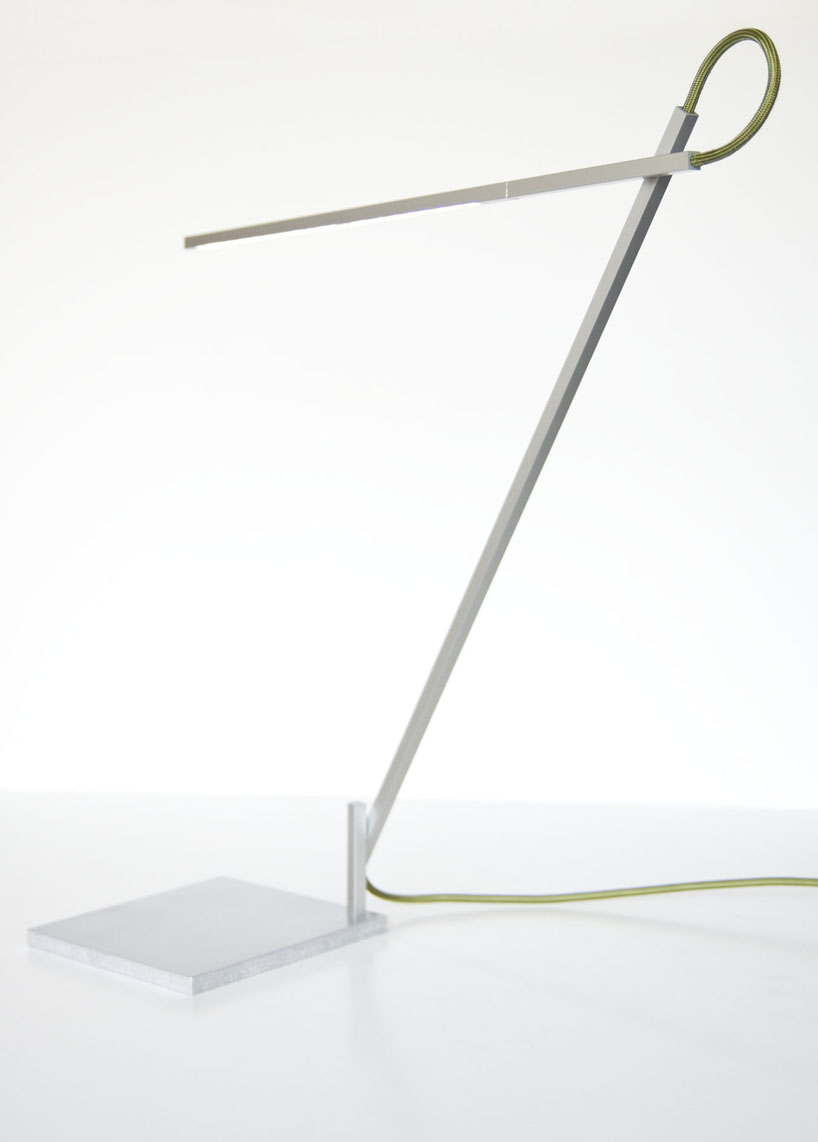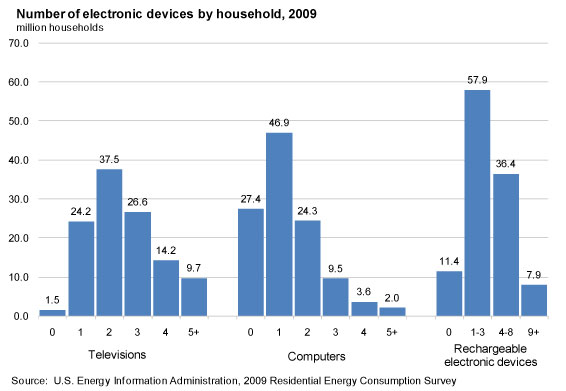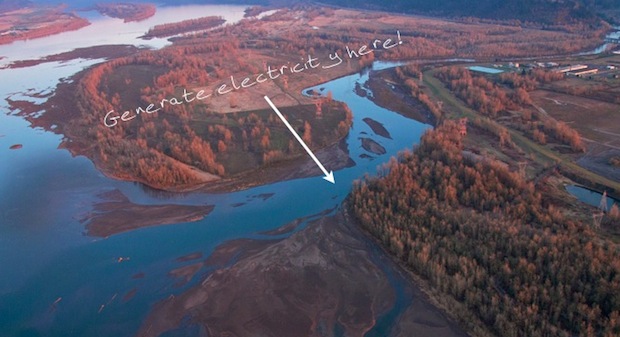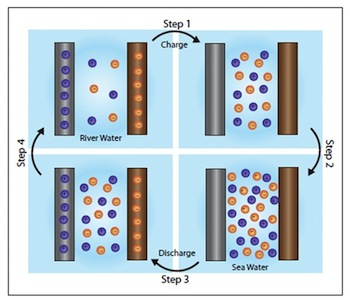constantinos hoursoglou: line light
by: Designboom - Weblog, 2011-03-30 14:35:00 UTC

line light is a minimal aluminium led task light made from off the shelf materials.
read more
The Green Trial: Artega SE vs Electric Tesla Roadster
by: Ecofriend, 2011-03-31 09:51:25 UTC
Dattatreya:

Why the comparison?
Both the cars under question not only belong to that exclusive sports car bracket, but they also elegantly exhibit that refined demeanor (albeit almost in a similar fashion), and, most importantly, are fully electric. But it should be remembered that one among them - the Tesla Roadster has proven itself time and again by its performance since its inception into the market in 2008. On the other hand, Artega SE has just recently being launched, though it can perhaps more than make up for it by its impressive 380hp in comparison to the 248hp of Tesla Roadster.
The Artega SE:
The Green Side:
Being green and mean, two independent sturdy motors can power this car up to a blinding top speed of 250km/hr and a 0 to 100 Km/hr pick up time of just 4.3 seconds. Also because of the low power-to-weight ratio of the Artega SE (Sports Electric), the energy expended is much less, which in effect increases the overall charge. Moreover, as Artega’s Dr. Wolfgang Ziebart puts it:
...electric cars recuperate the energy lost through braking and return it to the battery. In addition, unlike combustion engine vehicles, electric vehicles convert the full extent of the engine torque immediately, which makes driving them a completely new, very dynamic experience.
The Dark Side:
A blatantly high price of around $212,500 makes you pay an astronomical amount to go green in a dynamic style. And under normal driving conditions, it has a range of 200km, which is significantly less than Tesla Roadster.
The Tesla Roadster:
The Green Side:
In recent years, the Roadster has strongly maintained its image as one of the leading all-electric sports car. It’s mostly because of its powerful features and almost noiseless characteristic. The zero-emission car can comprehensively move from 0 to 97 km/hr in 5.7 seconds with the motor being air cooled instead of being liquid cooled. The range is also substantial at around 360 km. According the company, the Roadsters have collectively saved 500,000 gallons of fuel and over 5.3 million pounds of carbon dioxide emissions.
The Dark Side:
As with all electric vehicles, the charging time of Roaster via an ordinary electric socket can take more than 5 hours a day. Additionally, the top speed of this exalted vehicle is around 201km/hr, which is less in comparison to Artega SE.
The final verdict:
The Artega SE can be considered as a serious challenger to Tesla’s Roadster in the electric sportcar department. But still, the Roadster can be expected to hold on to its crown because of its base price of $109,000, which is hefty but is almost half the cost of an Artega SE.
Source: EcoFriend/CNET


 Intelligent Power Meter helps you save the Earth and your pocket too
Intelligent Power Meter helps you save the Earth and your pocket too
by: Ecofriend, 2011-03-31 11:09:32 UTC
Sayak017:

Burdened by your rising electricity bills? Wondering where and how you can cut your daily power consumption to get some respite? Well, think no more! Here comes the Intelligent Power Meter that helps you monitor your power consumption and act accordingly.
In most cases, we have our power meters installed outside our houses or flats and so the only way we get to know our power usage is when we get the electric bill at the end of the month. But by then, it is too late to act and the only thing that we can do is wish that we had been more of an environmentalist and saved more power which in turn would have saved our pockets!

With the advent of science and technology, the demand for power is only going to rise by the day. Newer gadgets and fancier appliances will continue to emerge and will find their places from the shelves of stores to our houses faster than they can be replaced by newer and better ones. But be it the new LCD television set, laptop or the electric oven, it would require power to operate.
So what exactly is an Intelligent Power Meter and how does it benefit us? It is a device to which the appliance is plugged in so that the power consumption of the appliance can be instantaneously monitored in real-time. Hence, we can get an estimate of the energy consumption of the various appliances that we use in our day to day life and act more prudently. We may limit our energy uses in certain cases and remember to switch-off equipments or appliances that consume greater amount of power, when not in use. Once we have a feedback right in front of our noses, it is bound to go a long way to help in reduction of household energy consumption.
Standing in the 21st century, where the demand curve for power is rising exponentially on one hand and there are huge concerns about conservation of the environment in the other, we must ensure that there is optimization of power usage and minimize the losses. A lot of research has gone into development of smart grid systems which are envisioned to replace the ordinary power grid systems that are in use today. Smart meters are an important component of these systems and they seem to be the way forward. The Intelligent Power Meter is one simple way, among many others, that shows us the way to be a more responsible citizen of the Earth!





Via: igreenspot


 Companies Get New Tools for Finding Safer Chemicals
Companies Get New Tools for Finding Safer Chemicals
by: Greener Design, 2011-03-31 16:08:32 UTC
Companies have a bigger toolbox to use when seeking greener chemicals.

 America's Gadget Obsession Is Causing Massive Electric Bills
America's Gadget Obsession Is Causing Massive Electric Bills
by: fast company, 2011-03-31 18:22:55 UTC

Want to know what's behind your energy bill? According to new numbers from the U.S. Energy Information Administration's Residential Energy Consumption Survey, it's all your high-tech gadgets--and your insistence on sitting and bathing in comfortable temperatures.
The total amount of energy used in U.S. homes remains virtually unchanged between 1978 and 2005. This is baffling, given all the increases in efficiency in both major appliances and home-buidling techniques in those 27 years.
And, indeed, space heating, which used to take up two-thirds of a home's energy use, has been nearly halved: It's now drastically easier to heat your home. However, in a perfect illustration of Jevon's paradox--which states that any energy efficiency gains will be offset by increase use--every other major category has increased. Demand for more hot water and more cold spaces has increased (the number of houses with central air tripled over the time period, for instance).
But the real increase is in home electronics and appliances, which is now using two times the power that they were in 1978. Why's that, given that your refrigerator, washing machine, and dryer are worlds more efficient than they were 30 years ago? It's all those gadgets you have plugged in all the time:

Nearly half of American households have three TVs, a computer, and at least four rechargeable devices spinning their electric meter on any given day. That's not to mention the 79% with a DVD and 43% with a DVR. Suffice it to say, the vast majority of households had just one TV in 1978, and that was it. With all these gadgets, we're burning enough electricity to erase the last 30 years of innovation.
Follow Fast Company on Twitter. Morgan Clendaniel can be reached by email or on Twitter.


 Seawater Plus Fresh River Water Plus Nanotech Equals Green Electricity
Seawater Plus Fresh River Water Plus Nanotech Equals Green Electricity
by: fast company, 2011-03-31 22:01:34 UTC

Research at Stanford has resulted in a rechargeable "battery" that uses a mix of sea and fresh water and a dash of nanotech to generate electricity. Green power plants at river mouths could be the ultimate result.
By radically tweaking the way saltwater/freshwater batteries work, a research team led by professor Yi Cui has put together a new technology that could supply about 2 terawatts of electricity annually--that's about 13% of the world's current energy needs. The unlikely scenario behind this figure would require every single one of the world's river's mouths to be converted into saltwater power-generation systems. But even at a smaller scale, the technology could result in useful clean power-generation systems anywhere you can bring salt and freshwater together.
 The technology works through an incredibly simple process (though it requires a complex explanation). Two electrodes are immersed in a liquid bath that contains freshwater. A very small electric current is applied across the electrodes to charge up the "battery," then the freshwater is drained to be replaced by seawater. The seawater's greater concentration of ions from the dissolved salt (60 to 100 times more, in fact) results in an increase to the voltage across the two electrodes--meaning the battery can then be discharged to extract more energy than was initially applied to charge it.
The technology works through an incredibly simple process (though it requires a complex explanation). Two electrodes are immersed in a liquid bath that contains freshwater. A very small electric current is applied across the electrodes to charge up the "battery," then the freshwater is drained to be replaced by seawater. The seawater's greater concentration of ions from the dissolved salt (60 to 100 times more, in fact) results in an increase to the voltage across the two electrodes--meaning the battery can then be discharged to extract more energy than was initially applied to charge it.
Batteries that utilize this technology already exist, but they can be fragile and typically only rely on one type of ion migration. The Stanford system is much more resilient and also uses both the sodium ions and chlorine ions from the salt in the seawater to generate power--making it more efficient. Greater efficiency still is achieved by building the positive electrode out of manganese dioxide nanorods, which hugely increase the surface area of the electrode (by around 100 times compared to traditional electrode materials).
The idea for power plant production would be to locate huge versions of these batteries where seawater and freshwater are readily available. One could protect sensitive coastal areas from the impact of the plants by using a proportion of the electricity produced to pump seawater inland. Or instead of using river water, a different source of freshwater would suffice--rain run-off, gray water by-products from industry, and possibly even treated sewage.
Does it all sound too good to be true? Well, it gets better: A supply of just 50 cubic meters of freshwater per second could produce up to 100 MW of power, enough to power 100,000 homes. And the waste byproduct is merely a mix of sea- and fresh water, easily pumped into the ocean. Even the nanotech coating on the electrodes is environmentally benign.
[Image via Flickr user Sbeebe].
To read more news like this follow Fast Company on Twitter. Or chat with Kit Eaton himself via tweets.
Related: How Resource-Strained Cities Can Save Water


 3-D Lithium-Ion Batteries Are Lighter and Charge in Minutes
3-D Lithium-Ion Batteries Are Lighter and Charge in Minutes
by: Eco Geek Latest, 2011-03-31 19:13:03 UTC

A new type of lithium-ion battery that features a 3-D interior structure is able to recharge in just a few minutes, can be discharged over twice as many times as traditional lithium-ion batteries and is thinner and lighter than existing versions -- essentially the dream battery for electric cars.
The new battery prototype was presented at this week's national meeting of the American Chemical Society. Conventional lithium-ion batteries consist of electrodes stacked in thin layers, which creates many of its problems like slow charging and limited discharging and a tendency to overheat.
The new battery reconfigures this arrangement by using copper antimonide nanowires arranged into a tightly-packed 3-D structure similar to bristles on a hair brush. The nanowires have more surface area and can store twice as many lithium ions and they're more stable and heat resistant than the graphite electrodes used in existing batteries. The result is a battery that recharges in 12 minutes instead of two hours and has double the lifespan.
The current prototype is the size of a cell phone battery, but the creators hope to scale up the technology to be used in other gadgets like laptops and, eventually, electric cars.
via Physorg
Easy Key System: Distinguish keys without even looking at them
by: The Design blog, 2011-03-30 22:15:22 UTC
Sahilkh18:

Ever felt that you tend to feel lost with a bunch of similar looking keys? If two keys are of the same brand or color then picking the correct one becomes a task in itself.
Vera Kunhartova, to kill all such confusions, has designed the Easy Key System, which differentiates keys with the help of Braille. These keys come in a 100% biodegradable compressed case which is very easy to carry around.
One can easily swap keys with an uncomplicated and insightful system. This can prove to be beneficial for people who are visually impaired, as locating the correct key is always a problem for them. Also, when someone enters a dark zone, picking the right key will be much easier.
So, either place it around your neck or wrap it on your wrist, the Easy Key System will make picking keys less confusing.
[Cheers Vera]


 Design trends: Gravity Food Preparation System
Design trends: Gravity Food Preparation System
by: The Design blog, 2011-03-31 00:44:50 UTC
Rajanier:

The trend
Cooking has been a tedious task for many. It demands a great deal of attention and patience. But everything has changed today, as science and technology have come to our rescue. Here are a number of innovative ideas for future kitchens and food preparation systems, which will change the very nature of cooking.
The inspiration
Gravity Food Preparation System is a cooking system, which is designed and made by Mr. André Taris of Queensland University of Technology. He was driven to create this cooking system after learning that a high percentage of Australian children were overweight. Taris made this food preparation system so that children can learn good eating habits quickly and can have a healthier diet.
What makes it so special?
The Gravity Food Preparation System helps both parents and children in cooking. Parents will find that it is an easier way to cook, while children can learn cooking quickly using the different features provided in the system. They can use the measurement cups provided in it, understand about nutrients, learn different methods of cooking and practice cooking daily. It is also educational as it teaches children about size, quantity and measurements.
What’s in it for me?
The Gravity Food Preparation System has many tools, which will help children learn cooking easily. There are many cups in this preparation system. They can be twisted and their lids can be easily taken off, but are also spill-proof at the same time. Different liquids can be mixed very quickly, as there is an aeration part in the cups. The ingredients can be mixed in the cup with the spatula, which is also used for scraping and spooning. All the materials in the Gravity Food Preparation System are microwave and dishwasher safe, which will make them long lasting and durable. Since the items are made of plastic, it is perfectly suited for children and their safety.
What’s next?
Egg: A flower-shaped kitchen concept

Egg is a flower-shaped concept kitchen, which is designed by Vlad Icobet and looks like a flower bud or an egg with legs. When this concept kitchen is unfolded it looks like a flower with three petals and a core. The Egg has the most useful features of a kitchen, which include a place for chopping, cutting and preparing food, a cooking place and a washing basin. The most amazing feature of the Egg is that it has an interactive holographic projector, which can be used to find recipes on the Internet. It’s a definite space saver and can be color customized for any kitchen.
Modern Smart Kitchen Cupboard from the Future

Cheng He, Liu Guang Kui and Zhou Dong made a cupboard or an all-feature kitchen set of the future. This Smart Kitchen Cupboard has three areas: cooking, washing and mixing. There are two kinds of outlets of the flumes in the Smart Kitchen: first the parallel water outlets, which is like an induction and it lies on both sides of the flume, and the other one for using the Smart Kitchen in various environments. It uses hydraulics, disinfectors, shutting systems etc, to make this cupboard state of the art.
This future kitchen also features an icebox, electric oven, closet, knife stand and a table-board.
Laser cooking is super-fast ‘Cooking in the Futur’

Ludovic Peperstraete, designed a laser cooking appliance for the Electrolux design lab Contest, which is called “Cooking in the Futur”. This equipment uses lasers for cooking. A single laser ray cannot cook the food, but when there are two lasers the food will get cooked easily. For a better result, Ludovic added three harmless lasers in the Cooking in the Futur, which will cook the food that is kept on a special ventilated tray. The “Futur” system allows you to scan the food before cooking, so you can best determine how it should be cooked. You can also choose the desired texture of your dish.


 Ecological Wall for an organic living
Ecological Wall for an organic living
by: The Design blog, 2011-03-31 16:31:25 UTC
Write2me:

From the food you eat to the water you drink, the fabric you wear to the pencil you use, in every little thing you can have a feel of nature. More and more people are going organic these days as the demand for organic products are on a high. “Organic” is no more an alien word to us. Most of us are pretty aware of the innate benefits of adopting organic food and clothing in our life. But beyond our imagination, there is much to the organic ballyhoo. Here we are talking about something unusual wherein we can welcome more organics into our life.
An awe-inspiring project, cited as the Ecological Wall brought forward by Stanislaw Mlynski. Mlynski is a Polish architecture student who won a bronze prize in an international contest organized by National Taipei University of Technology School of Architecture.
The picture displayed at the top is of the award-winning Ecological Wall designed by Mlynski which gives an earthy charm to the spectator. It is based on a general standard that transfers skyscrapers, commercial buildings etc to green ecosystems. It is fully equipped with solar system for the free flow of energy.
The structure is covered with floras that absorb CO2 which moves into the plants, and then oxygen is passed on with water vapour, through the pores in stems and leaves.
In Mlynski’s own words,
I proposed to create structural wall using organic waste containers. I believe that arrangement of elements, as well as their shapes have potential to create shelters for animals, gather water, and reduce CO2. The solar system has the aim to ensure energetic independence.
The Ecological Wall is an architectural marvel made by composting the organic wastes such as tea bags, paper, and fruit’s leftover, crop residue, wood, grass cuttings and a lot more. Mlynski is deeply inspired by natural eco system and made use of it in an optimal way by way of composting.
Composting is a nature’s way of recycling. It is a relatively simple process and can be carried out on a large scale without any geographical constraints. This design is bound to bring a sense of tranquility to our living space.
With this amazing proposal, Mlynski has opened new doors for future architectures who dream of making it big in organic evolution.
Via: Inhabitat










Comments by our Users
Be the first to write a comment for this item.